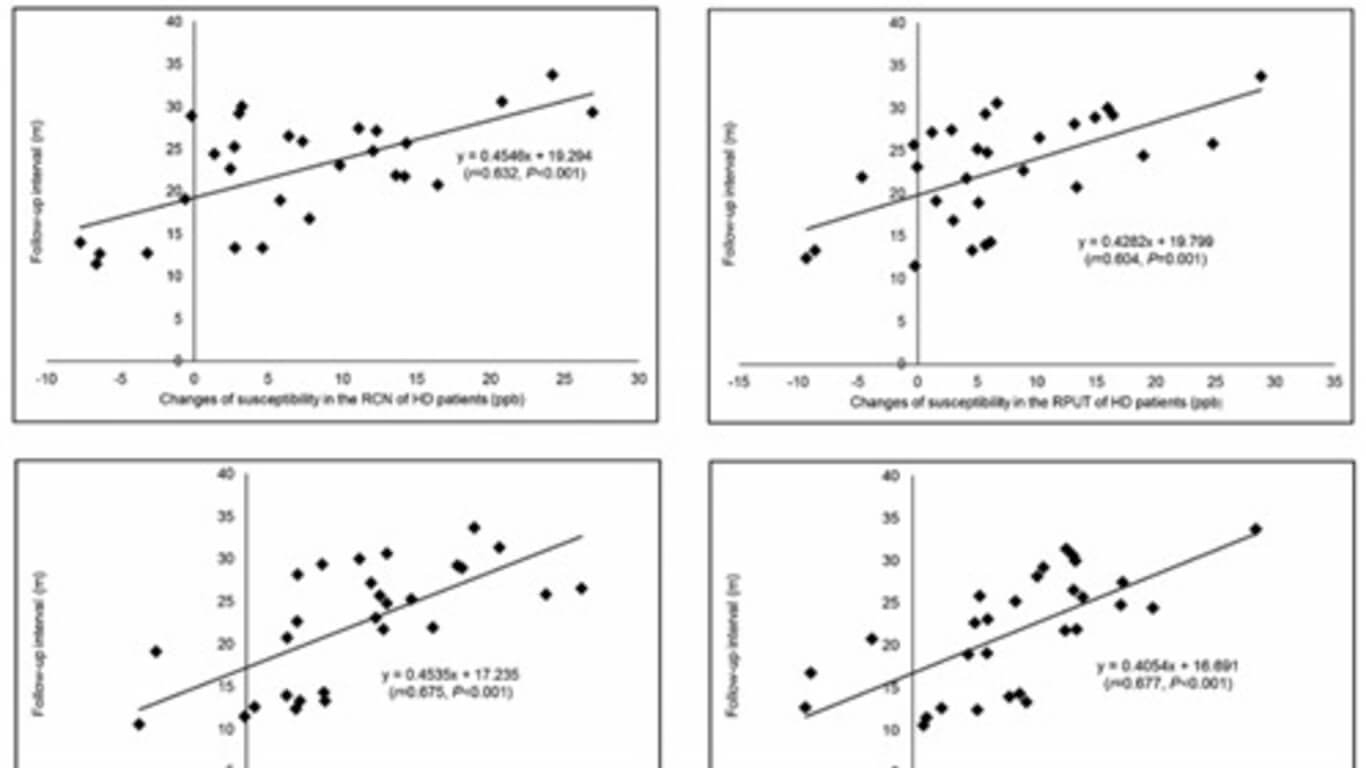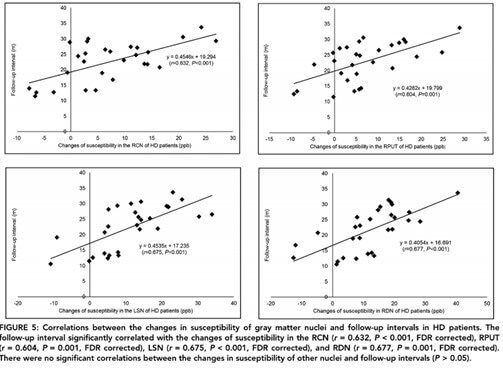
Increased Iron Deposition of Deep Cerebral Gray Matter Structures in Hemodialysis Patients: A Longitudinal Study Using Quantitative Susceptibility Mapping
By: Karen Holzberger, President & CEO of SpinTech MRI
Author(s): Chao Chai, MD,1 Huiying Wang, BS,2 Saifeng Liu, PhD,3 Zhi-Qiang Chu, MD, PhD,4 Jinping Li, MD,4 Tianyi Qian, PhD,5 E.M. Haacke, PhD,6 Shuang Xia, MD, PhD,1* and Wen Shen, MD, PhD1*
Journal: Journal of Magnetic Resonance Imaging
Published: 2019
Read Full Paper: https://onlinelibrary.wiley.com/doi/abs/10.1002/jmri.26226
Abstract

The cerebral iron overload in hemodialysis patients has been reported in a previous study, in which the evaluation of the changes in iron content could be affected by the cross‐sectional analysis.
The purpose of this prospective longitudinal study was to investigate the longitudinal changes of iron deposition in hemodialysis patients using quantitative susceptibility mapping (QSM) and correlate these findings with the longitudinal changes of neurocognitive function and clinical factors.
Method
In all, 34 patients and 30 health controls (HCs) participated in this study. The mean follow-up interval was 22 ± 7 months. We used 3.0T susceptibility-weighted imaging (SWI).
QSM reconstructed from original phase data of SWI was used to measure the susceptibility of gray matter structures including bilateral caudate nucleus (CN), globus pallidus (GP), putmen (PUT), red nucleus (RN), substantia nigra (SN), dentate nucleus (DN), thalamus (THA), pulvinar of thalamus (PT). The Mini‐Mental State Examination (MMSE) test and clinical factors were recorded.
Statistical Testing
Analysis of covariance adjusting for age and gender as covariates or a paired t‐test for the differences in susceptibility, MMSE scores, and clinical factors among baseline, follow‐up patients, and HCs. Correlation and stepwise regression analysis for the relationship between susceptibility, MMSE scores, and clinical factors.
Results
The susceptibility of bilateral CN, GP, PUT, RN, SN, DN, THA, PT in follow‐up patients was significantly higher than that in baseline between patients and HCs except for left THA (all P < 0.05; Bonferroni corrected). MMSE scores significantly negatively correlated with the susceptibility of bilateral CN, PUT, and RRN in the baseline examination and bilateral CN, PUT, RN, and DN in the follow‐up examination (all P < 0.05; false discovery rate [FDR] corrected). The follow‐up interval, creatinine, phosphorus, and calcium were independent factors for the increased susceptibility of some nuclei (all P < 0.05).
Conclusions
The iron deposition of gray matter nuclei in hemodialysis patients increased over roughly a 2‐year period and may be a risk factor for neurocognitive impairment. Creatinine and abnormal calcium‐phosphorus metabolism were independent risk factors for abnormal iron deposition.

